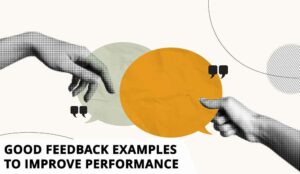Are you really hearing what your customers are trying to tell you? If the honest answer is ‘no’, then let David Naylor give you a helping hand on how to get deeper insights in to your customer service proposition.
Whenever I start a new project, I want to get as close to the customer as possible and try to discover ‘what our customers are saying’ – or WOCAS for short.
Top tips for harnessing WOCAS
|
Even though our clients can share reams of data on their contact volumes and annual survey results, they can rarely tell us what frustrates their customers most or the root cause of their problems.
For me, the best place to go is where the action is – sit next to agents and listen to calls for a couple of hours at a time. From this you can start to form a picture of WOCAS about the client and then complement this with other discovery processes, such as text mining or even speech analytics, to gain deeper insights.
This is what Bill Price, founder of Driva Solutions and co-founder of the LimeBridge global alliance, did at Amazon.com, where he initiated a WOCAS programme. Here’s a little of what he has to say on the subject:
I probably got this idea from working closely with Tom Peters and Bob Waterman in the late 70s and early 80s at McKinsey researching what became “In Search of Excellence”. Tom loved to talk about how Hewlett and Packard used to ‘manage by wandering about’ (MBWA). He later urged managers to reserve two hours per week to MBWA, even publishing calendars with two-hour blocks greyed out to signal not holding meetings but, rather, wandering around and checking out operations in
person.
At Amazon, where I was its first global vice president of customer service, I did just that – spent a minimum of two hours per week sitting next to agents ‘observing’ calls or e-mails. Typically in each session I would discover four to five brand new ideas that I would e-mail to my colleagues around the company, revealing opportunities for marketing or fixes for IT. In one memorable case the agent was so transfixed by the “calls in queue” on the reader service board on the wall that she was hurrying through a particularly tough call. I leaned over and whispered “take your time”. She proceeded to do a terrific job solving the customer’s problem. Indeed, he wrapped up the call with
“wow, you guys are great!”
The next day I told my team to take down all of the wallboards. The only important priority for the agent is to focus on the screen in front them and the customer they are helping and to whom they need to devote their entire attention.
I also spent an hour at Amazon each week sitting in on team meetings and was surprised that they were one-sided, boring sessions, telling agents about new vacation policies or updating them on Jeff”s interview schedule in case our customers called to comment. Instead, I started asking agents to share stories about what our customers were saying to them. My agents had incredibly smart insights from listening to customers, and often suggested improvements as well.
As a result of these observations and agent insights, I asked each team leader to send a brief verbatim report each week, naming it WOCAS. We shared the WOCAS report across other departments and ended up engaging closely with them, to add new site features or to eliminate “dumb” contacts reasons.
Building effective processes
What Bill did was to exploit one of the best sources of customer feedback he had – the front line – which hears the same issues, time after time, and he was able to build a process that capitalised on this.
In principle it sounds simple. But why, then, do so many businesses fail where Bill succeeded? Why does the valuable knowledge that could be extracted from the contact get lost as soon as a conversation with the customer ends?
Gathering agents’ feedback at offline sessions has become a common way to collect the ‘view from the front line’.
Unfortunately, such sessions are not done regularly enough and, truth be told, are often conducted to make management feel better because they”ve listened to staff ‘gripes’.
Customer feedback presented in these sessions rarely has sufficient structure, is very general, internal in nature, and is not supported by quantitative data. As a result, one “big idea”, based on gut feel or consensus, wins through. Local operational improvements are made but they fail to fix the root causes of problems. Everyone feels better for a few days but not a lot really changes.
Personally, I believe that capturing customer feedback must be done at the moment it is offered. However, setting up and maintaining a successful WOCAS programme takes skill and you need to know the critical failure points to avoid. Let’s have a look at some dos and don”ts:
- DON”T implement performance targets that discourage staff from capturing customer feedback.
- DO promote performance measures that positively encourage staff to spend time logging customer feedback.WOCAS reward schemes should be highly visible to ensure promotion of the programme.
- DON’T fail to give staff an escalation point or knowledge of the feedback process. Likewise, don’t make processes onerous on the agent.
- DO give your WOCAS programme the clarity and visibility it needs to succeed.
The process, if possible, should be driven through a desktop tool thatenables agents to capture feedback, there and then. Important detailsto gather include: how many times the agent deals with the same issue or hears that specific feedback; and what he or she thinks could be done to fix the root cause. - DON’T underestimate the importance of aggregating the feedback you receive. Most companies are poor at this and do not understand its significance in process improvement.
- DO appoint a full-time analyst who understands the business processes and not just the numbers.
- DON’T let whoever shouts loudest get the resource, while potentially more worthy customer process improvements are de-prioritised. This is a situation many businesses will recognise, where staff are defending empires and working in silos. People love to ‘fire fight’ today’s issue because it makes them a hero. It’s much harder to focus on problems
that will still be there tomorrow. - DO realise that having a volume of feedback is critical for understanding what’s important. Customer verbatims may help with ‘shock tactics’ but seeing hard facts will continually remind people of the magnitude of an issue, eliminate
‘fact-free’ decision-making, and keep the business focused on root cause resolutions, not fire fighting.
Thankfully, average handle time is no longer the key measure in some operations – but not all. If staff are not given time between calls to think about or capture feedback, or leave capture until after the shift or during a break, then valuable information is forgotten. This person has the skill to identify those recurring issues with the highest severity – for both the customer and business – and find the root causes.
Finally, a WOCAS programme might have shown real benefits for companies like Amazon, but it doesn’t stop with agent-captured feedback. Harnessing ‘what our customers are saying’ needs to be done on a continuous basis, with a strong focus on communication. The following five points should help you on your way:
1) Communication starts with your senior management
WOCAS can prove extremely powerful in breaking down the barriers that exist between middle managers – that’s often where the problem lies, after all – but the organisation must lead from the top on WOCAS. Personal objectives should contain targets that drive the business to co-ordinate its efforts on the customers’ behalf. In that way, WOCAS feedback can be used to understand root causes of issues and drive business improvement across the company.
2) Communicate positive results back to your front line
We’ve talked about ways to generate more feedback in to the WOCAS programme through reward schemes. However, without constructive feedback on the suggestions raised, the same old frustrations will return, lowering morale and creating that ‘nothing ever gets done, so why bother?’ feeling in your staff. So, communicate what’s going to happen and when. Tell the whole business about improvements coming through the WOCAS programme. Closing the loop is a very powerful motivator.
3) Plan changes with your operational managers
As suggestions are turned in to real improvements, the operations need to be prepared to implement these changes. At Budd, we talk about ‘landing slots’ where the impact and timing of system, people and process changes are planned with the front line. A complete plan of what projects, large or small, will deliver, and when, should be maintained jointly with the operational managers. This will ensure the operations are prepared and the maximum benefit of the changes can be
obtained from the start.
4) Listen to your quality monitoring team
Consider what more you could do with your quality monitoring team who are also listening to calls day in, day out. There are great tools for mining all the valuable information stored in e-mails from customers. You can even apply these tools to speech.
5) Use your customers’ language to record contact reasons
Consider the way you record customers” reasons for contact. Is it helpful? Does your taxonomy of codes reflect your internal processes or do the codes give you a view of the world as your customers see it? I guarantee that you’ll find the latter far more insightful.

David Naylor is a director of Budd in the UK, a member of the LimeBridge alliance, which operates in 11 countries.Tel: +44 7855 806189Website: www.budd.uk.comBill Price is the founder of Driva Solutions, a member of the LimeBridge alliance.Website: www.drivasolutions.com
Author: Jonty Pearce
Published On: 28th Jun 2006 - Last modified: 15th Aug 2025
Read more about - Customer Service Strategy, Language, Service Strategy















